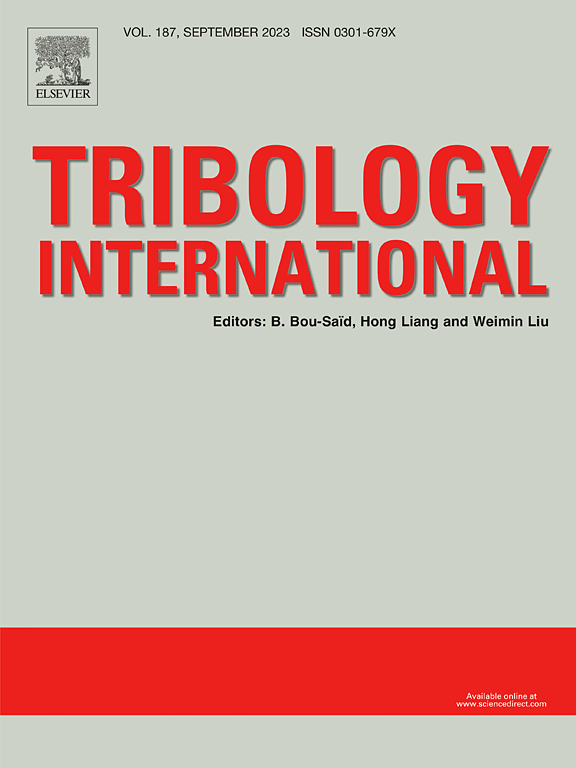一种适用于分层介质的高效通用粘接接触模型
IF 6.1
1区 工程技术
Q1 ENGINEERING, MECHANICAL
引用次数: 0
摘要
涂层和层状结构对胶粘剂的接触行为起着至关重要的作用。这项研究提出了一个通用的,准确的,计算效率高的模型来预测层状介质中的粘附性。该模型是基于Lennard-Jones (LJ)势、Hamaker求和和Derjaguin近似建立的,从而得出了一个封闭形式的粘附压力表达式,该表达式严格地解释了非均匀层之间的分子相互作用。该模型针对均匀、单层、多层和功能梯度材料(fgm)的球-半空间接触试验进行了验证。它适用于表面粗糙度和附加的物理效应,如静电相互作用,被证明。该模型能够详细表征表面压力和应力分布,为微/纳米尺度的摩擦和粘着磨损机制提供有价值的见解。简单的计算成本分析证实了该模型的优越性。此外,开发并验证了有限元实现,扩展了模型对复杂材料,接触体几何形状和与粘附敏感工程系统设计相关的边界条件的适用性。本文章由计算机程序翻译,如有差异,请以英文原文为准。
A high-efficiency versatile adhesive contact model for layered media
Coatings and layered structures play a critical role in determining adhesive contact behaviors. This study presents a versatile, accurate, and computationally efficient model for predicting adhesion in layered media. The model is developed based on the Lennard–Jones (LJ) potential, Hamaker summation, and Derjaguin approximation, leading to a closed-form expression for adhesive pressure that rigorously accounts for molecular interactions across inhomogeneous layers. The model is validated against sphere-half-space contact tests for homogeneous, single-layered, multilayered, and functionally graded materials (FGMs). Its applicability to surface roughness and additional physical effects, such as electrostatic interactions, is demonstrated. The model enables detailed characterization of surface pressure and stress distributions, providing valuable insight into micro/nano-scale friction and adhesive wear mechanisms. A simple computational cost analysis confirms the model’s superior efficiency. Furthermore, a finite element implementation is developed and verified, extending the model’s applicability to complex materials, contact body geometries and boundary conditions relevant to the design of adhesion-sensitive engineering systems.
求助全文
通过发布文献求助,成功后即可免费获取论文全文。
去求助
来源期刊

Tribology International
工程技术-工程:机械
CiteScore
10.10
自引率
16.10%
发文量
627
审稿时长
35 days
期刊介绍:
Tribology is the science of rubbing surfaces and contributes to every facet of our everyday life, from live cell friction to engine lubrication and seismology. As such tribology is truly multidisciplinary and this extraordinary breadth of scientific interest is reflected in the scope of Tribology International.
Tribology International seeks to publish original research papers of the highest scientific quality to provide an archival resource for scientists from all backgrounds. Written contributions are invited reporting experimental and modelling studies both in established areas of tribology and emerging fields. Scientific topics include the physics or chemistry of tribo-surfaces, bio-tribology, surface engineering and materials, contact mechanics, nano-tribology, lubricants and hydrodynamic lubrication.
 求助内容:
求助内容: 应助结果提醒方式:
应助结果提醒方式:


